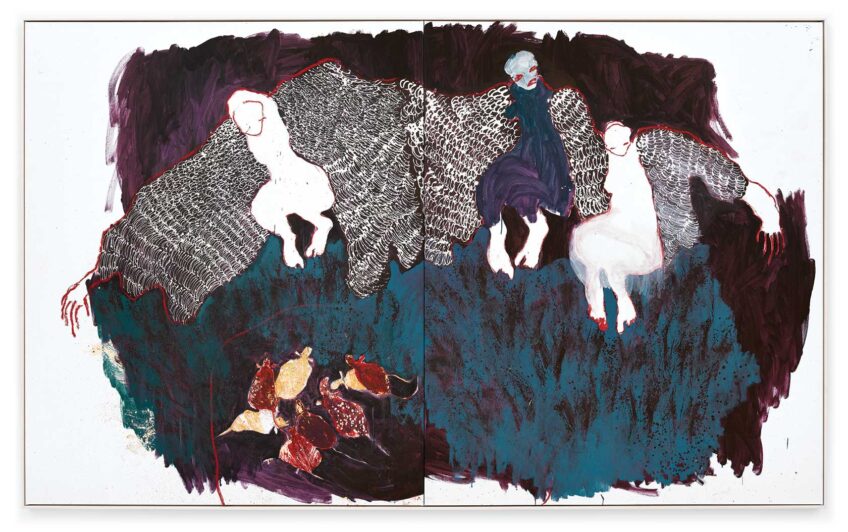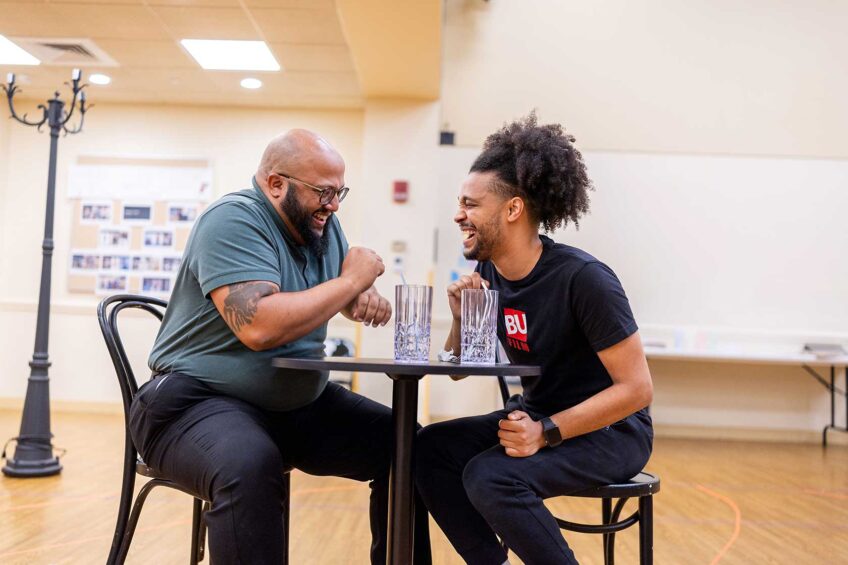
On Thursday, Jan. 23, five actors with intellectual disabilities will take the stage in Back to Back Theatre’s “The Shadow Whose Prey the Hunter Becomes” at ArtsEmerson. In 70 minutes, the powerful performance vacillates from hilarious to heart-wrenching to deeply intellectual and back again.
Running through Jan. 26, the show follows a group of activists holding a public meeting. They touch on topics as far and wide as factory farming, human rights and the social impact of automation. In a world where those with intellectual disabilities are considered less able than others, how will that status shift when artificial intelligence becomes more able than every person?
“The show is incredibly entertaining and funny. Which sounds perhaps hard to believe, given the description of it,” says Bruce Gladwin, artistic director of Back to Back Theatre. “Our objective is to make great art, and advocacy is a kind of byproduct of that. Our objective is to engage and hold the audience and also to deliver a kind of theatrical experience that they’ve never seen before.”
Back to Back Theatre routinely has a cast of actors with intellectual disabilities. But this particular performance was inspired by a New York Times story from 2013 wherein 39 men with intellectual disabilities were found to have been effectively enslaved in a turkey processing plant in Iowa. Though significant advancements have been made for the rights of differently abled people, abuse remains a constant problem. From Back to Back’s discussion of this incident grew “The Shadow Whose Prey the Hunter Becomes.”
Scott Price, one of the show’s performers, says he thinks the biggest misconception about those with disabilities is that their voices are not a part of the cultural conversation. “I think people are so scared of the not-normal,” says Price. “I want them to hear our story and see we’re human as well. We’re human beings just like you.”
“The Shadow” serves to normalize people with disabilities as actors on stage, a position into which they are not traditionally welcomed. The show also allows viewers a better understanding of the needs and challenges facing differently abled people, and further, to consider how these standards may be applied to themselves when artificial intelligence is the reigning thought standard. “Get used to having a label around your neck,” says Simon Laherty in the show. “You will be surrounded by low expectations.” Who’s to say there’s more than a twist of fate between the general populace and the judgments people with disabilities already live with?








